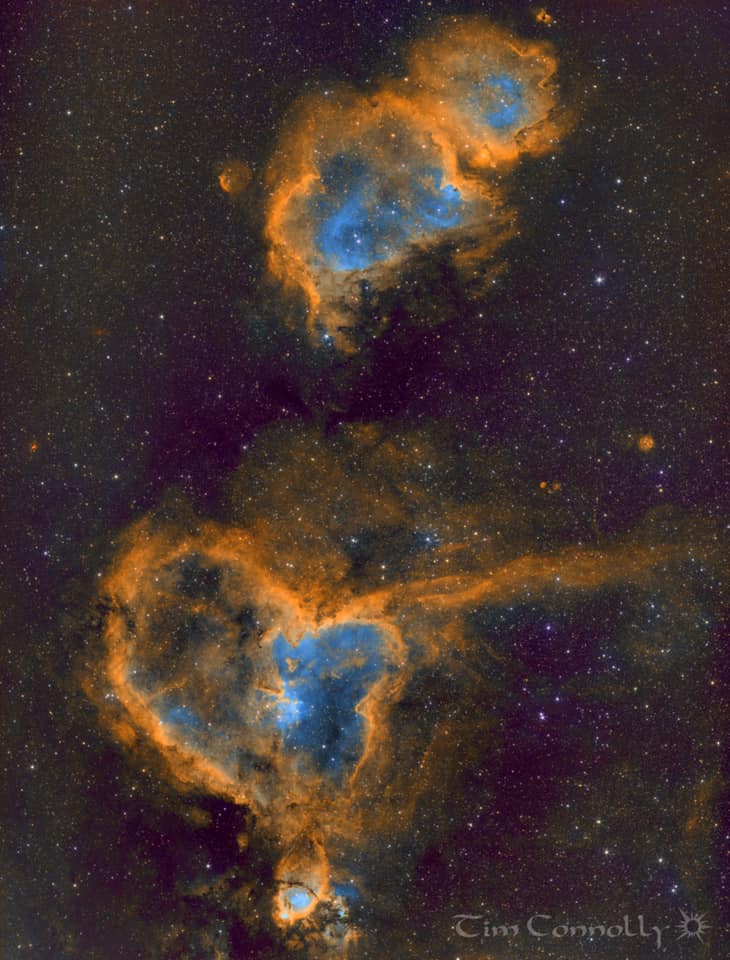To enhance our amateurs’ abilities of astro-observation and astrophotography, to stimulate the public’s imagination and creativity, and to better feel the beauty of the stars, universe and science. We have the ASIWEEK ASTROPHOTOGRAPHY now. We sincerely invite global astronomers and photographers to participate.
Here are the fantastic works from the 33rd edition of 2019 ASIWEEK ASTROPHOTOGRAPHY COMPETITION. Let’s take a look!
It is Christopher Sullivan and his target NGC 7380 captured with ZWO ASI1600MM Cool that won the championship.
The winning entry:
Photographer: Christopher Sullivan
Target: NGC 7380
Equipment: Paramount MyT, Celestron Edge11HD, ZWO ASI1600MM
SH2-129 is a relatively faint emission nebula in Cepheus, a neighbor of the larger and more often imaged IC 1396. Sometimes referred to as the “Flying Bat” nebula, this region is characterized by Ha emission as well as a small, mixed emission and reflection nebula (vdB 140), seen in the lower portion of the field, just to the left of center. What is most remarkable about this region is a recent discovery made in 2011 by Nicolas Outters, called the “Squid Nebula” due to its shape, but more officially called Ou4.
Entries from other photographers:
Photographer: TJ Connolly
Target: IC 1805 and Sharpless2-199
Equipment: ZWO ASIAIR, ASI1600MM Pro, ZWO 7nm Ha, OIII filter, SII filters, the Pentax 200mm lens
IC 1805 is also known as Heart Nebula. It lies some 7500 light years away from Earth and is located in the Perseus Arm of the Galaxy in the constellation Cassiopeia. It was discovered by William Herschel on 3 November 1787.
Sharpless 2-199 is also known as Soul Nebula. It is an emission nebula located in Cassiopeia. Several small open clusters are embedded in the nebula: CR 34, 632, and 634 (in the head) and IC 1848 (in the body). This complex is the eastern neighbor of IC1805 (Heart Nebula) and the two are often mentioned together as the “Heart and Soul”.
Photographer: Jordan Ragsdale
Target: IC 1795
Equipment: Astro-Telescopes 152 f/5.9 (“Kong”), Sky-watcher EQ6-R Pro, ZWO ASI183MM, Astronomik 6nm Filters
IC 1795 is also known as the Fish head nebula. It features glowing gas and dust in a star forming area in Cassiopeia. It s part of the Heart nebula (IC1805) complex that is located at about 6000 light years away.
Photographer: Maicon Germiniani
Target: M20
Equipment: TS115/800, ZWO ASI1600MM Pro, HaLRGB (360-120-60-60-60)
M20 is also known as the Trifid Nebula. It is an H II region located in Sagittarius. It was discovered by Charles Messier on June 5, 1764. Its name means ‘divided into three lobes’. The object is an unusual combination of an open cluster of stars; an emission nebula, a reflection nebula and a dark nebula. Viewed through a small telescope, the Trifid Nebula is a bright and peculiar object, and is thus a perennial favorite of amateur astronomers.
Find us on Facebook if you want to see more delicate astronomical images.
Facebook Page: https://buff.ly/2GN9ASW
Facebook Group: https://buff.ly/31fh49c





